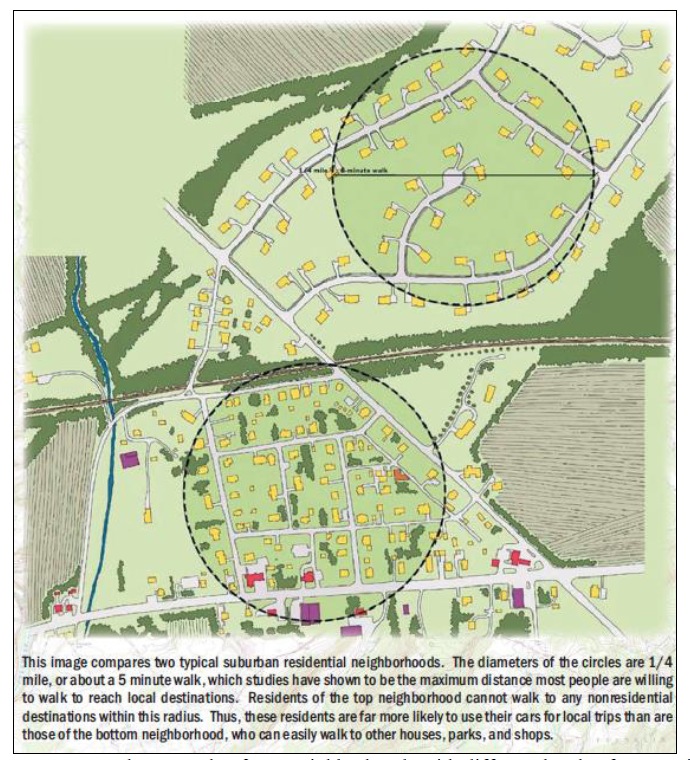MOUNTAIN-PLAINS CONSORTIUM
EXECUTIVE SUMMARY
Transit Oriented Development (TOD) creates high density, mixed land use patterns with pedestrian friendly environment concentrated around transit stations. This enables people to walk to transit stops or to their daily destinations, and decreases the need for private vehicle use.
Throughout the Wasatch Front Metropolitan Region, the majority of land use development forces people to drive in order to access their destinations. This is due to low density and mostly single use developments built on poorly connected street networks with several cul-de-sacs and few routing options for transport system users. Even though the development of Wasatch Front has the legacy of transit supportive land uses in the region’s city centers and previous street car suburbs, the connection between them is still such that it encourages driving as the dominant mode of transportation. Designing streets and street networks that would support TOD environments is still considered with hesitation as the potential solution for traffic congestion and increasing travel demand. One of the reasons for this might be the need to evaluate the effects that TOD has on traffic operations.
This project aims to quantify the traffic impacts of TOD using a study network located in West Valley City, Utah, bordered by 3500 S and 4700 S (north-south), and 4800 W and 5600 W (east-west). This part of West Valley City will go through many development and land use changes in the next 15 years. The Mountain View Corridor is being built along 5600 W, and many other road and transit projects are planned in the vicinity. This area will be focused on transit use, so there is a need to design the best possible TOD features for the planned conditions.
The purpose of TOD is to motivate people to change their travel mode choices. Built environment could be the answer to this challenge. Changing the environment to accommodate walking and transit vehicles could increase the number of transit users. The main points and guidelines of the literature review have been adapted and applied to the project network. The design principles are given separately for each set of improvement measures. The improvement measure designs given in this document are:
- Enhanced street connectivity
- Traffic calming measures
- Innovative intersections
- Transit friendly designs
Once the designs were reviewed, edited, and approved by UTA, we created detailed design for each measure and applied them to the project network. Performance evaluation measures we used are related to traffic analysis, street connectivity, and transit accessibility. The report provides recommendations for future development of the observed network into a TOD-supportive environment.
Download full version (PDF): Traffic Modeling of Transit Oriented Development
About the Mountain-Plains Consortium
www.mountain-plains.org
The Mountain-Plains Consortium (MPC) theme is “Transportation Infrastructure and Operations to Support Sustainable Energy Development and the Safe Movement of People and Goods”. MPC is a competitively selected university program sponsored by the U.S. Department of Transportation through its Research and Innovative Technology Administration.
Tags: Mountain-Plains Consortium, TOD, Transit-Oriented Development, UT, Utah, West Valley City







 RSS Feed
RSS Feed